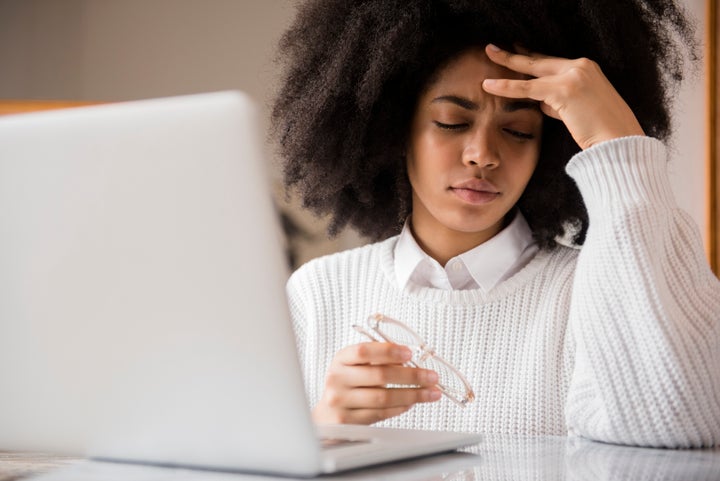Migraines are a horrible mystery. Unfortunately for anyone who suffers from them, there is neither a known cause or cure for the painful headaches - which are known to be much more debilitating than a common tension headache.
Migraines are painful and unpleasant, they can cause nausea and vomiting, dizziness and temporary sight problems such as seeing flashing lights, zig-zag patterns or blind spots. Some people also experience tingling. According to the NHS, a migraine usually lasts between four hours and three days, though people can feel tired for a week after an attack.
HuffPost UK has rounded up the best things you can do to avoid getting a migraine in the first place and what you can do to relieve the pain.
[READ MORE: Could this piercing stop migraines?]

Know your triggers. The best way to avoid a migraine is to get to know your triggers and avoid them as best as you can. Drinking too much caffeine, drinking alcohol, not eating enough food, or eating too much cheese and chocolate (😞) are known to be common triggers. Stripy patterns, bright lights and clashing colours can also set some people off. Keep a diary if you can’t work out what might be causing your migraines. And if you are worried your symptoms may be a sign of something more serious, seek medical advice.
Avoid stress. Stress is also a big trigger for migraines. Massages can be a good (but costly) way to ease muscle tension that can cause attacks. Breathing exercises are a cheaper alternative to helping you relax. In a blog on HuffPost UK, Dr Seth Rankin, London Doctors Clinic founder and Senior NHS GP, suggests spending 10 minutes inhaling and exhaling slowly and deeply is good for relaxation.
Spot the early signs of an attack. The NHS says there are three main stages to an attack starting with the “prodromal” pre-headache stage, which includes changes in mood, energy levels, behaviour and appetite. The second stage is experiencing an aura, usually visual problems that can last up to an hour. The next stage is the headache stage, usually beginning with a throbbing pain on one side of the head and accompanied by nausea, vomiting and “extreme” sensitivity to sound and lights.
Find a dark space. Bright lights and noise can be incredibly painful during a migraine attack, which is why many people choose to lie down in a quiet, dark room to ease the symptoms. If you can get some sleep, even better.
Take painkillers. Obviously it’s important to make sure you seek medical advice before taking any medication, but taking over the counter painkillers such as paracetamol and ibuprofen can ease symptoms. They tend to be most effective if taken at the first signs of a migraine attack, the NHS says. If over the counter medication doesn’t work and you’re a regular sufferer you could also talk to your GP about anti-sickness medications and triptan medicines, which are specific to migraine.
Consider acupuncture. Acupuncture involves tiny needles being put in the skin around the body and derives from ancient Chinese medicine. The National Migraine Trust suggests that acupuncture can be effective in treating migraine.
Explore alternative pain relief. It is not known exactly how effective it is, or why, but many people swear that daith piercing, which is an ear piercing in the innermost cartilage fold of the ear, helps to ease pain. Advocates say it works in the same way as acupuncture, targeting pressure points on the body’s surface to ease discomfort. Others claim botox, vitamins, and pressure point headbands can work too. A 2016 study indicated a high percentage of children and young adults who suffer migraines have mild deficiencies in vitamin D, riboflavin (vitamin B2) and coenzyme Q10.